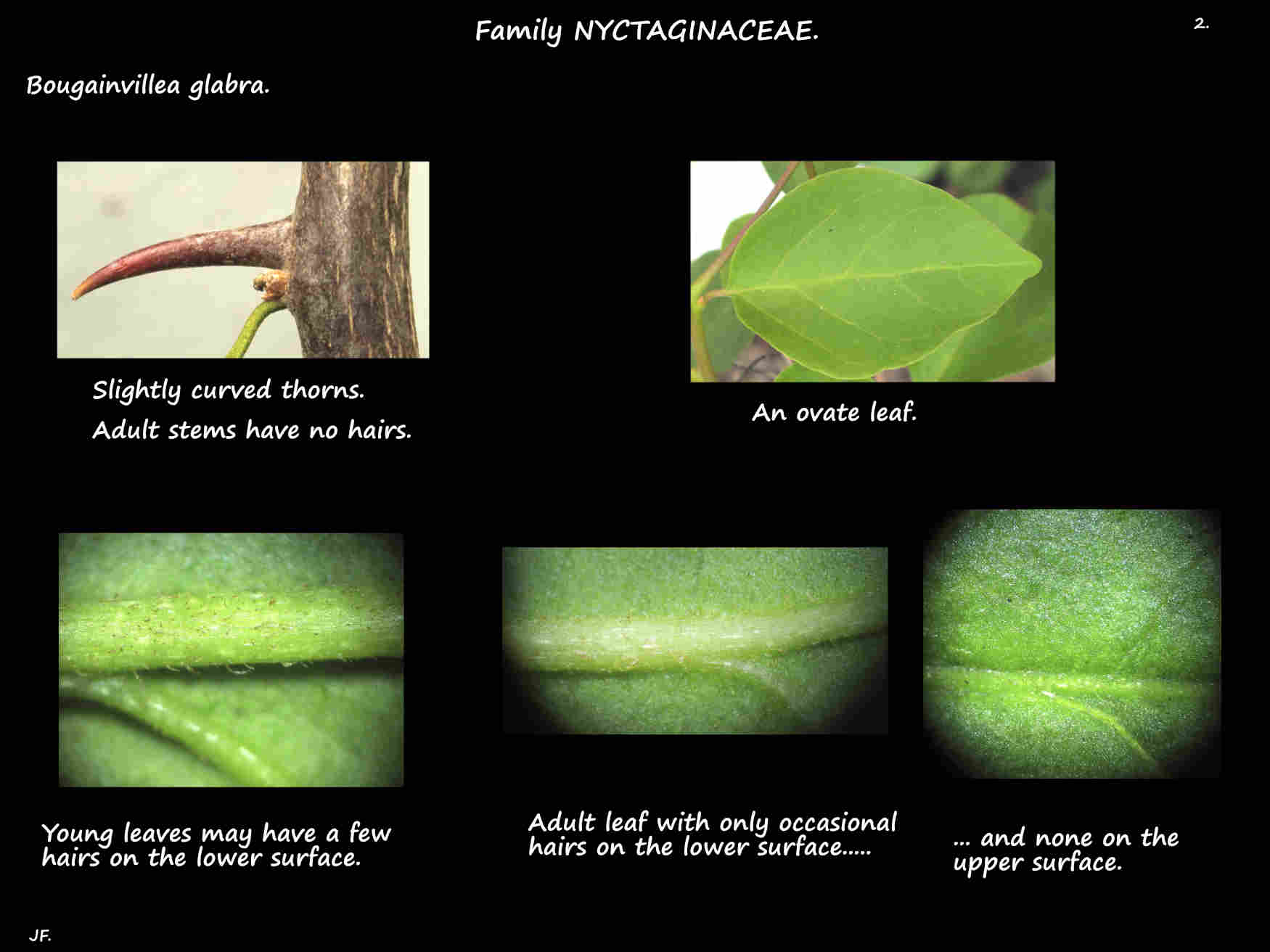Bougainvillea glabra.
From Brazil, the Lesser Bougainvillea (compared to B. spectabilis) is a weed in Brisbane.
They can grow as a shrub around 4 m high or a scrambling woody vine to 20 or 30 m.
Old plants can have a trunk 30 cm across.
Plants produce suckers at the base and their stems will root when they touch the ground.
The long branching stems have thin straight or slightly curved axillary thorns up to 1.5 cm long.
Adult stems usually have no hairs but young stems may have a few scattered ones.
The alternate leaves are on petioles 1 to 2 cm long that have a few small hairs.
Blades, up to around 13 cm long and 6 cm wide can be elliptic to ovate or lanceolate.
The tip tapers to a point that is sometimes long and the base is wedge-shaped.
The upper surface is smooth while the lower may have some hairs especially when young.
Inflorescences are small axillary clusters typically with 3 flowers along young stems or a large much-branched terminal cluster.
Flowers are on stalks that are fused to the midrib of a bract.
The bracts, 2 to 4 cm long are about the same length as the flowers.
The elliptic to oblong or heart-shaped bracts are purple to magenta.
Bracts in cultivars can be white, pink, purplish-red or other shades of purple.
They may have a few hairs but usually there are none.
Flowers have no petals but the 5 sepals are petal-like.
The sepal bases are fused into a tube up to around 2 cm long.
The green or purplish-green tube has 5 ribs down its lower section.
There may be a few to dense tiny hairs on the outer surface.
The spreading lobes, around 2.5 mm long are white to cream.
The 8 (5 to 10) stamens are on unequal filaments with the longest up to 12 mm.
The 2 mm long superior ovary is on a short stalk.
The 1 mm style holds a linear 2.5 mm long stigma.
Fruit are not seen here.
The very similar Great Bougainvillea, B. spectabilis has dense hairs on the stems and leaves
and longer red or reddish-purple bracts.
J.F.



